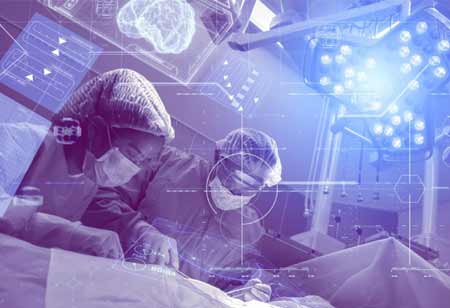Thank you for Subscribing to Healthcare Business Review Weekly Brief

The Future of Clinical Medical Physics: Navigating the Intersection of Technology and Patient Care
Healthcare Business Review
Clinical medical physics (CMPs) are crucial in enhancing healthcare by ensuring quality, safety, technology implementation, and patient care, ultimately improving human health and outcomes.
FREMONT, CA: The future of clinical medical physics is growth and transformation. As CMPs navigate the intersection of technology and patient care, they will continue to play a pivotal role in advancing healthcare. Their expertise in quality, safety, technology implementation, and patient care will be more critical than ever. The evolution of their role will require adaptability, a commitment to education, and a collaborative spirit. With these qualities, CMPs will ensure that the future of healthcare is one where physics continues to enhance human health and improve patient outcomes. The journey ahead for clinical medical physicists is not just about adapting to change; it's about leading it and ensuring that the field remains an integral and dynamic part of the healthcare ecosystem.
As the healthcare landscape continues to evolve, the role of clinical medical physicists (CMPs) is becoming increasingly vital. CMPs are scientists who apply the principles, methods, and physics techniques to the clinical environment, bridging the gap between complex technological tools and patient care needs. Many key factors are poised to shape the future of clinical medical physics.
Quality and Safety in Patient Care
CMPs' primary responsibility is to ensure quality and safety in patient care. This involves implementing advanced technologies and enhancing direct patient care. As treatments become more complex, CMPs' expertise in validating and ensuring the safe use of these technologies is crucial.
Adapting to Technological Advancements
The rapid advancement of technology in healthcare is reshaping the role of CMPs. They are at the forefront of validating, accepting, and ensuring the quality assurance of AI-based tools. This requires a deep understanding of both the technology and its clinical applications.
Education and Training
The future demands that CMPs possess a high level of education and specialized training to keep pace with technological advancements. Continuous professional development is essential for CMPs to maintain their expertise and provide the highest level of patient care.
Research and Development
CMPs play a significant role in research and development within the medical field. They contribute to advancing medical technologies and methodologies, ensuring that innovations are safely and effectively integrated into clinical practice.
Regulatory Compliance
As healthcare regulations become more stringent, CMPs must ensure that clinical practices comply with all relevant laws and standards. This includes staying updated on changes in regulations and implementing necessary adjustments in clinical procedures.
Collaboration with Multidisciplinary Teams
CMPs work within multidisciplinary healthcare teams, collaborating with physicians, nurses, and other healthcare professionals. This collaboration is essential for the holistic care of patients and the successful integration of physics into medicine.
Personalized Patient Care
The future of clinical medical physics involves greater personalization and precision in procedures. CMPs will play a key role in customizing treatments to the specific needs of individual patients, improving outcomes and patient satisfaction.
Expansion Beyond Radiation Therapy
While radiation therapy remains a core area of clinical medical physics, the field is expanding to include diagnostic imaging, nuclear medicine, health physics, and beyond. CMPs must adapt to these broader responsibilities and develop competencies in these areas.
Advocacy and Communication
CMPs will also take on roles in advocacy, communicating the importance of medical physics to non-physicist professionals, colleagues, administrators, physicians, and patients. This advocacy is crucial for the recognition and growth of the field.









